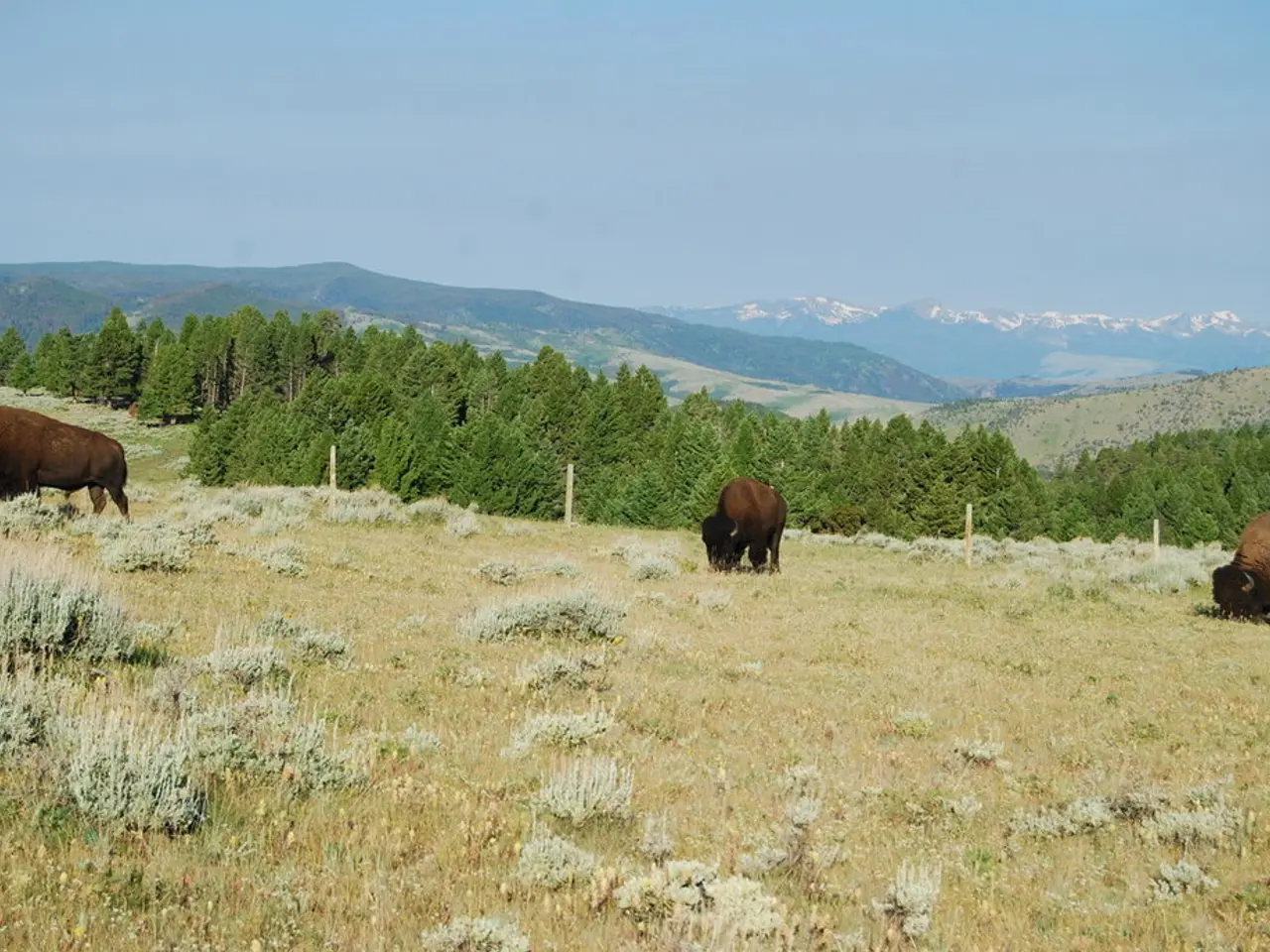Comprehensive Handbook for Capturing Wildlife in Photographs
In the realm of photography, wildlife photography stands out as a unique and captivating genre. For those just starting their journey in this field, here are some essential tips to help you get started and improve your results.
The Sigma 150-600mm f/5-6.3 Contemporary DG OS HSM is a budget-friendly option for a long-zoom wildlife lens, but remember that the welfare of the animal should always come before the need to get a great shot.
Researching locations and animal behavior is crucial to anticipate subject activity and improve your chances of capturing great shots. Be patient and observant, as wildlife photography often requires waiting quietly for the right moment.
Mastering camera settings is another key aspect. Use fast shutter speeds, around 1/1000s or faster, for moving subjects. Continuous autofocus and burst mode are also beneficial for capturing sharp, decisive moments.
Planning your composition carefully is essential. Apply the rule of thirds, use leading lines, frame your subject with natural elements, and sometimes include the wider environment to tell a story.
Respecting wildlife and the environment is paramount. Minimize disturbance, follow ethical guidelines, and prioritize the animal’s well-being over forcing shots. Start with simple, essential gear—lightweight and easy to change quickly. You don’t need expensive or bulky equipment initially.
Using camouflage or blinds can help you blend into your surroundings and avoid spooking animals. Edit photos subtly to enhance colors and contrast without making images look unnatural, and avoid over-cropping that reduces image quality.
Use the histogram on your camera rather than relying solely on the screen preview to properly expose images. A fast shutter speed, such as 1/500s, is a good starting point for a subject in movement. For very fast movements, opt for 1/1000sec or above.
In some cases, it's more important to have a slightly grainy image than a completely unusable one. Observing first, watching for behavioral patterns, are preparation for getting great shots. Staying in one spot can increase the chances of capturing a great shot, especially for shooting small and fast animals.
Seeking out advice from experienced wildlife photographers can provide great inspiration. In a wide-angle wildlife image, the setting is vital as it can help tell the story. For slow-moving or stationary subjects, a setting of 1/200sec or above (depending on the lens) is sufficient.
Using a garden or local park is a great setting for wildlife photography. It's recommended to look to see what's on your doorstep and keep your wildlife photography as local as possible. A plain background can be used to frame a subject in a strong animal portrait.
For beginners, any camera and lens can be used to start wildlife photography. To become a better wildlife photographer, it is essential to know the subject's habitat, diet, behavior, and movement patterns. An extender can increase the focal length of a lens, but it decreases the widest aperture setting.
There is no right or wrong shooting mode for wildlife photography, but being ready to capture action is crucial. Using shutter priority mode is beneficial for fast-moving subjects. It's important to observe wildlife before starting to take photos, assessing the subject and environment first.
Sam Hobson made a name for himself using a wide-angle lens for wildlife photography. By following these tips, beginners can develop strong technical skills, respect nature, and gradually improve their wildlife photography results.
There are further guides on wildlife photography, including guides on wildlife conservation photography, being an ethical wildlife photographer, capturing fast-moving birds and animals, photographing butterflies, animals, and pets. Happy shooting!
- For those venturing into the realm of photography, exploring lifestyle topics such as fashion-and-beauty, food-and-drink, home-and-garden, travel, education-and-self-development, or entertainment may provide a less intense introduction compared to wildlife photography.
- If you're a fan of the thrill and excitement of casino-and-gambling, you might find a new hobby in capturing the atmosphere of live gaming events through photography.
- Just as wildlife photographers need to know the habits and behaviors of their subjects, having an understanding of general-news topics and current events can help journalists and documentary photographers tell more compelling stories.
- In the world of sports, understanding the dynamics of teamwork, strategy, and individual performances can provide photographers with unique opportunities to capture memorable moments on the field.
- As a wildlife photographer continues to improve their skills, they may find interest in other genres, such as exploring the beauty of flowers and plants in the home-and-garden category, or capturing the essence of travel destinations, contributing to a rich mix of lifestyle and wildlife photography.




